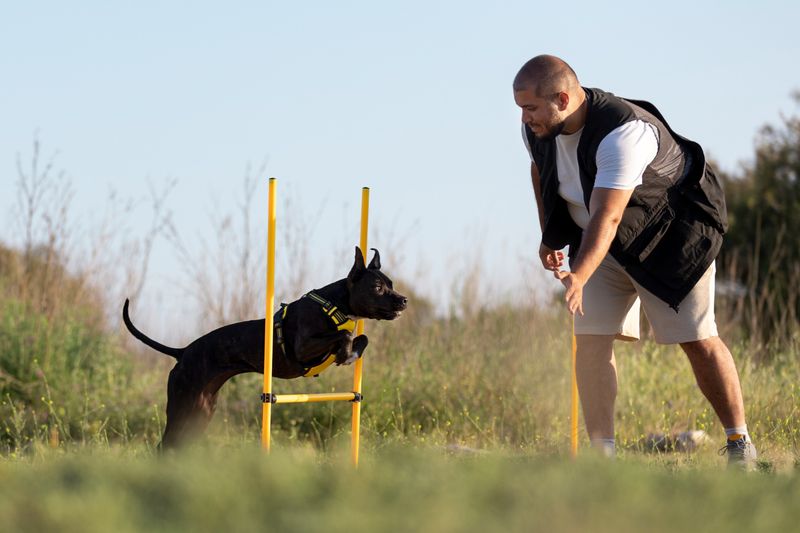Choosing between a male or female dog isn’t just about picking a name—it’s a decision that can shape your entire pet-owning experience. While both can be loving, loyal companions, their differences go beyond the obvious.
Some swear males are more affectionate, while others argue females are easier to train. Then there’s the age-old debate about which is more stubborn, protective, or independent. The truth? It depends on the dog—but there are some real distinctions that might surprise you.
From temperament quirks to training challenges, personality shifts to potential health concerns, knowing what to expect can help you make the best choice for your lifestyle. Whether you’re looking for a cuddle buddy or a canine athlete, choosing the right fit matters.
Before bringing home your four-legged best friend, let’s break down the key differences between male and female dogs—because picking the perfect pup is more than just a coin flip.
Size and Weight

When choosing a dog, size and weight can be important factors. Male dogs are typically larger and heavier than females of the same breed. This size difference may affect your living arrangements, as larger dogs may require more space.
Consider whether you have the room for a bigger dog or if a smaller, more compact pet would fit better into your lifestyle. Remember, a larger dog might also mean larger expenses, such as food and medical bills. Understanding these differences helps you pick the right companion for your home.
Temperament

Temperament is a crucial aspect when choosing a dog. Male dogs are often more playful and boisterous, while females tend to be calmer and more nurturing. However, these traits can vary significantly depending on the individual dog’s personality.
Think about the energy level you can manage and the type of companion you desire. Whether you want a playful partner or a laid-back friend, consider how these temperament differences align with your lifestyle and family dynamics.
Training and Obedience

Training needs can differ between male and female dogs. Males might exhibit more independent and stubborn behavior, making training a bit more challenging. Females are often perceived as easier to train due to their nurturing nature.
Consider your training experience and patience level. Are you prepared for a potentially stubborn student, or do you prefer a more compliant trainee? These factors can influence your decision, ensuring you choose a dog that matches your training capabilities.
Health Issues

Health considerations can vary between male and female dogs. Males may be more prone to certain issues like testicular cancer, while females might face challenges such as mammary tumors or uterine infections. Spaying or neutering can mitigate some of these risks.
Understanding the potential health issues associated with each gender helps you prepare for future medical needs and expenses. Consider the long-term health implications when choosing your dog to ensure their well-being and your peace of mind.
Aggression Levels

Aggression levels can differ between male and female dogs. Males might exhibit more territorial behavior and aggression, especially if unneutered. Females, especially when in heat, can also show signs of irritability or aggression.
Assess your comfort level with handling potential aggression and consider your environment, such as the presence of other pets or children. Understanding these differences can help you create a harmonious home environment with your new furry friend.
Bonding with Family

Bonding tendencies can be influenced by a dog’s gender. Male dogs often form strong attachments with one person, while females might bond more evenly with all family members.
Consider the type of relationship you want with your pet and how it aligns with your family’s dynamics. Whether you prefer a dog that becomes your personal shadow or one that spreads the love, understanding these bonding tendencies ensures a satisfying companionship.
Reproductive Behaviors

Reproductive behaviors can be a key consideration. Male dogs may mark territory more frequently, and females might go into heat if not spayed. These behaviors can impact your daily routine and home environment.
Decide whether you’re prepared to manage these behaviors or if altering your pet is an option. Understanding reproductive behaviors helps you anticipate and address potential challenges, ensuring a peaceful coexistence.
Lifespan

Lifespan may vary slightly between male and female dogs, often influenced by factors such as genetics and health care. On average, females might live slightly longer than males, but this is not a hard and fast rule.
Consider how lifespan differences align with your plans and expectations. Whether you prefer the potential for a longer companionship or are focused on the quality of life, understanding these aspects helps guide your decision.
Socialization Needs

Socialization needs can differ between male and female dogs. Males might require more socialization to prevent territorial behavior, while females might naturally be more social.
Think about your willingness and ability to invest time in socializing your dog. Whether you enjoy frequent visits to the dog park or prefer quiet walks, understanding these needs ensures a well-adjusted pet.
Grooming Requirements

Grooming requirements may not differ drastically between genders but can vary by breed. However, males might have more pronounced grooming needs if they engage in more outdoor activities.
Consider your readiness for regular grooming and maintenance. Whether you enjoy grooming sessions or prefer a low-maintenance pet, these factors can help you decide which gender suits your lifestyle.
Cost of Care

Cost of care can vary between male and female dogs. Males might incur higher costs related to neutering, while females might have costs associated with spaying and potential pregnancy-related expenses.
Evaluate your budget for pet care and potential medical expenses. Understanding these financial implications helps you plan for a sustainable and comfortable pet ownership experience.
Activity Level

Activity levels can differ between male and female dogs. Males often display higher energy, requiring more exercise and stimulation, while females might be more content with moderate activity.
Assess your lifestyle and ability to provide the necessary activity level for your pet. Whether you love long hikes or prefer cozy afternoons, these levels help you choose the right dog to match your energy.
Appearance

Appearance can vary subtly between male and female dogs, from size and build to facial expressions. Males might have more pronounced features, while females might appear softer and more delicate.
Consider the aesthetic appeal and how it aligns with your preferences. Whether you favor a robust, masculine look or a dainty, feminine appearance, understanding these differences helps you select a visually pleasing companion.
Compatibility with Other Pets

Compatibility with other pets can be influenced by a dog’s gender. Males might exhibit more dominant behavior, while females could be more nurturing and accepting.
Think about your current pets and how a new dog might fit into your household. Understanding these compatibility factors helps ensure a harmonious multi-pet environment.

